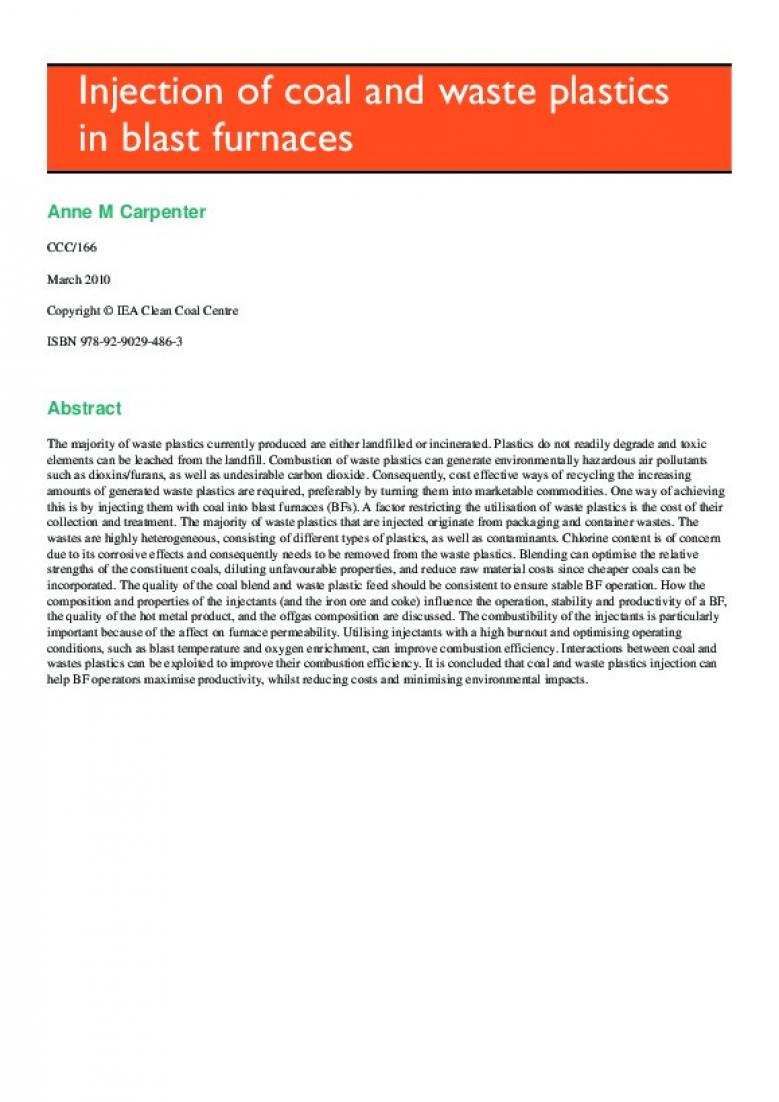CCC/166
March 2010
Copyright © IEA Clean Coal Centre
ISBN 978-92-9029-486-3
Abstract
The majority of waste plastics currently produced are either landfilled or incinerated. Plastics do not readily degrade and toxic elements can be leached from the landfill. Combustion of waste plastics can generate environmentally hazardous air pollutants such as dioxins/furans, as well as undesirable carbon dioxide. Consequently, cost effective ways of recycling the increasing amounts of generated waste plastics are required, preferably by turning them into marketable commodities. One way of achieving this is by injecting them with coal into blast furnaces (BFs). A factor restricting the utilisation of waste plastics is the cost of their collection and treatment. The majority of waste plastics that are injected originate from packaging and container wastes. The wastes are highly heterogeneous, consisting of different types of plastics, as well as contaminants. Chlorine content is of concern due to its corrosive effects and consequently needs to be removed from the waste plastics. Blending can optimise the relative strengths of the constituent coals, diluting unfavourable properties, and reduce raw material costs since cheaper coals can be incorporated. The quality of the coal blend and waste plastic feed should be consistent to ensure stable BF operation. How the composition and properties of the injectants (and the iron ore and coke) influence the operation, stability and productivity of a BF, the quality of the hot metal product, and the offgas composition are discussed. The combustibility of the injectants is particularly important because of the affect on furnace permeability. Utilising injectants with a high burnout and optimising operating conditions, such as blast temperature and oxygen enrichment, can improve combustion efficiency. Interactions between coal and wastes plastics can be exploited to improve their combustion efficiency. It is concluded that coal and waste plastics injection can help BF operators maximise productivity, whilst reducing costs and minimising environmental impacts.
| Attachment | Size |
|---|---|
| 875.3 KB |


